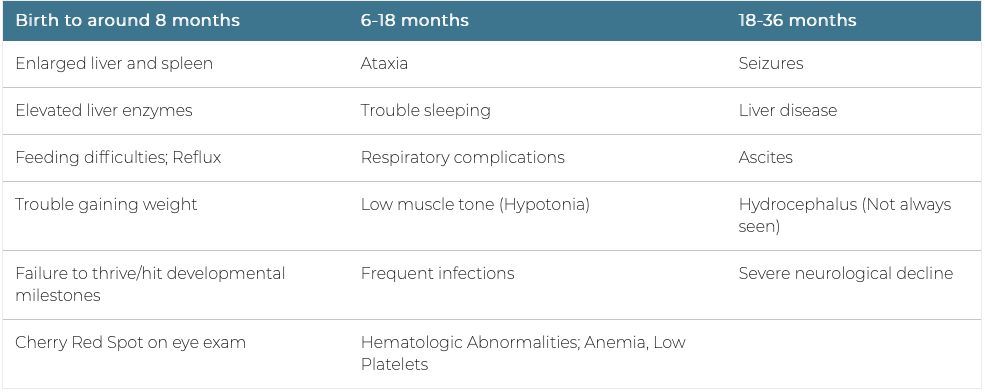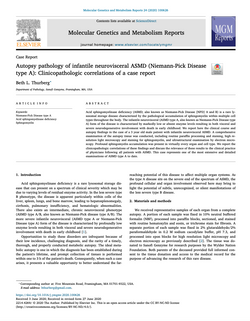Infantile Neurovisceral ASMD (NPA)

Infantile Neurovisceral ASMD (NPA) is the most severe form of ASMD and patients have little to no residual ASM activity, onset in early infancy of progressive systemic manifestations and rapid neurodegeneration, failure to thrive, and death typically occurs by 3 years of age.
Patients with Infantile ASMD present relatively normal at birth and are typically diagnosed within the first 6 months of life due to hepatosplenomegaly. Although hypotonia may be evident within the first few months, development usually progresses somewhat normally until about 6 months of age.
Development typically plateaus somewhere between 6 months to 15 months, and is followed by a rapidly progressive psychomotor deterioration. Most patients never develop the ability to sit independently and eventually lose their ability to swallow due to progressive hypotonia.
Clinical Characteristics

* Disease characteristics listed and age of onset are for general information purposes only, and are by no means meant to be fully inclusive or exclusive of any particular case. Each patient's journey is unique and some children may experience more or less symptoms than others with a variable onset and rate of progression.
Approved Therapies
Currently there are no approved therapies for Infantile Neurovisceral ASMD (NPA), and disease management is purely palliative. An enzyme replacement therapy (ERT) is under development for chronic visceral ASMD (NPB), but has no effect on the neurologic manifestations of this disease.
Symptom Management
Symptomatic treatments include occupational therapy, physical therapy, and speech therapy for developmental disabilities, maximal caloric intake measures including gastrostomy tube and nasogastric tube, ant anti-gastroesophageal reflux measures, medicinal intervention for seizure control, blood and/or platelet transfusions, oxygen supplementation and breathing treatments for the interstitial lung disease, and rehabilitation services as needed.




